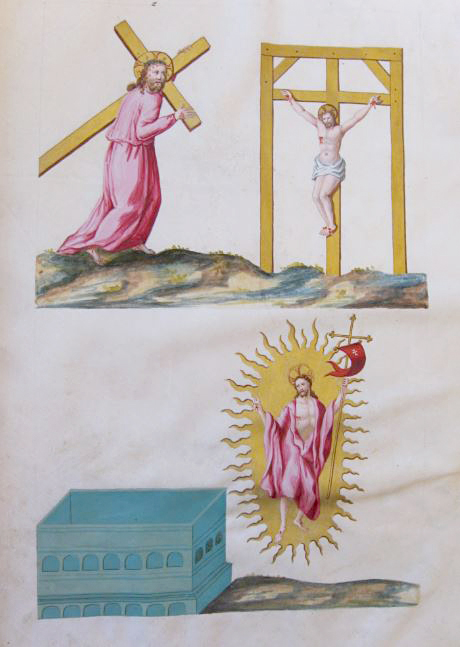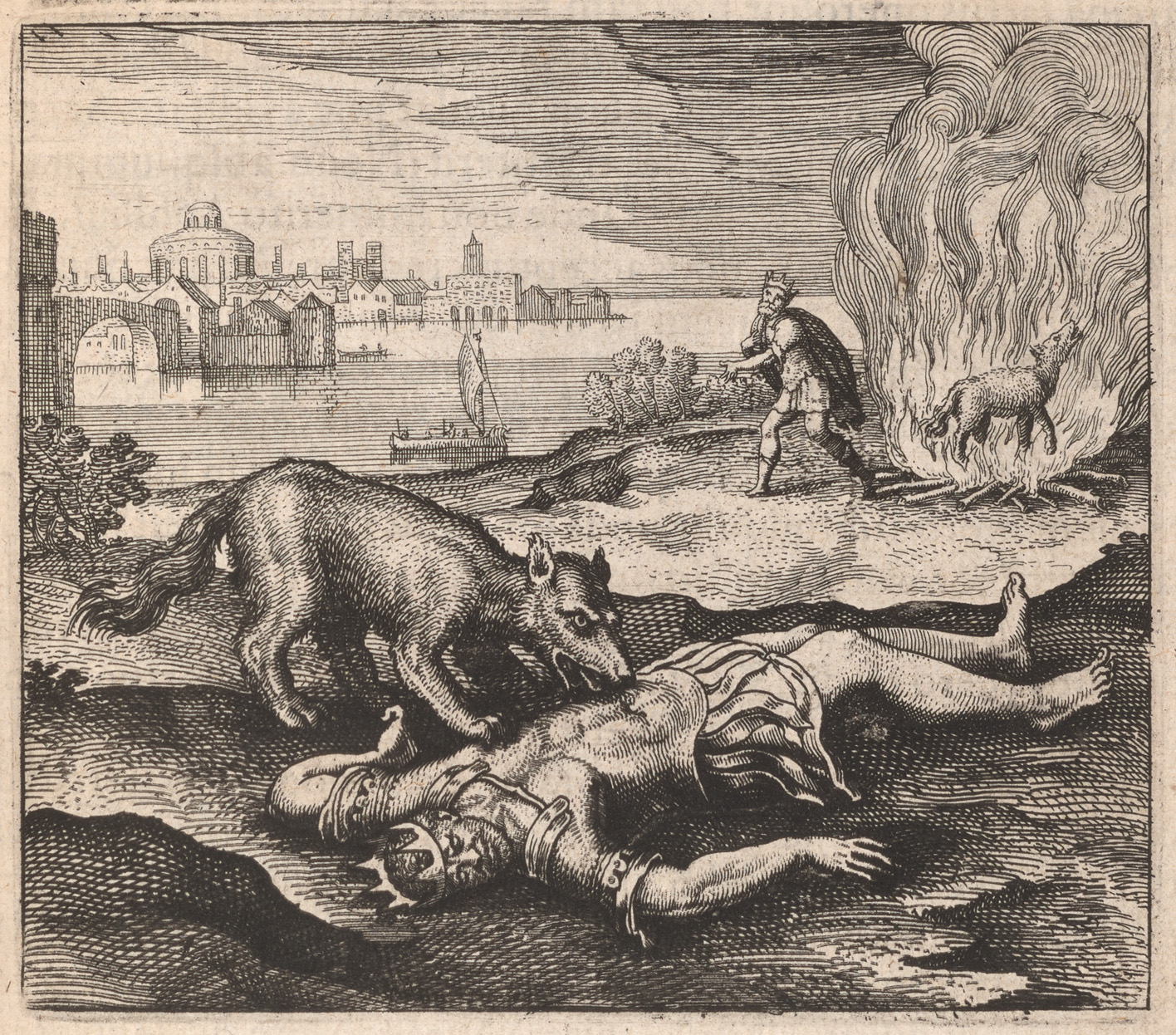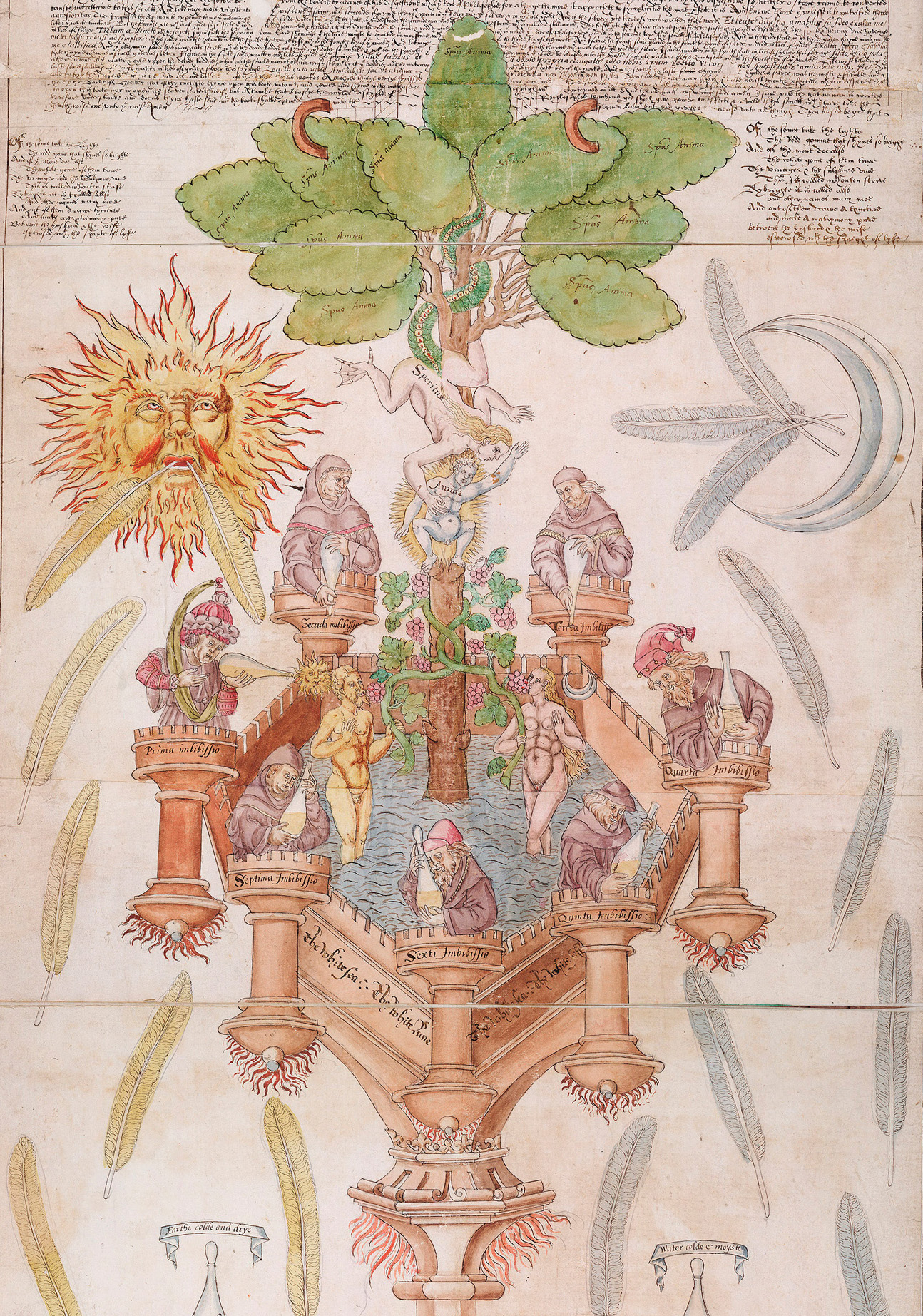DOI
Copied to clipboard!
https://doi.org/10.26300/bdp.ff.rampling
Alchemy was a novitas, a novelty, when it arrived in Christian Europe in the twelfth century. Known to the Latin West primarily from translations of Arabic texts, this new art taught how extraordinary physical transformations might be wrought through natural processes harnessed by human ingenuity — specifically, by crafting a transmuting agent, the philosophers’ stone. While new to Latinate readers, “alchemia” already had a long and multilingual history. In Greco-Roman Egypt, chemeia encompassed a variety of techniques for coloring substances: from dyeing wool purple to tinging base metals gold or silver. In the Byzantine Empire, alchemy increasingly came to be associated with the transmutation of metals. Alchemists in the medieval Islamic lands developed an array of practices that related to medicine as well as metallurgy, within a theoretical armature influenced by the precepts of Greek and Arabic philosophy.
Yet without the ancient pedigree of other, more securely established fields of knowledge such as geometry, medicine, and astrology, alchemy’s intellectual status in Christian Europe was initially uncertain. In making the case for alchemy as scientia — learned knowledge — rather than as a manual craft, its adherents adopted a variety of strategies. One was to invent authoritative founding figures, from Hermes Trismegistus, the legendary Egyptian sage, to ancient philosophers like Democritus or Biblical authorities like Solomon. Another was to account for alchemical change using accepted philosophical and medical doctrines. In the thirteenth century, for instance, scholars sought to explain transmutation in terms of Aristotelian natural philosophy. In the sixteenth century, writers influenced by Renaissance humanism seized upon classical myth as a source of authority and a tool for interpretation. The rise of mechanical philosophies of matter over the next century brought to the fore atomist and corpuscular explanations, which in turn drew on earlier medieval theories about the composition of metals.
Alchemists were concerned with more than transmutation: they also sought to heal sickness and prolong life. During the 1350s, John of Rupescissa argued that the “quintessence,” a substance made by repeatedly distilling wine, represented a perfect balance of elements, capable of expelling sickness from human bodies. This notion, accompanied by growing practical interest in distilled remedies, influenced the development of chemical medicine during the sixteenth century — particularly through the interventions of the Swiss medical reformer Paracelsus (Theophrastus von Hohenheim, 1493–1541), who proposed alchemy as a fundamental science of nature, and one imbued with profound religious significance.
Alchemy’s diversity was reflected in its practitioners, who ranged from artisans, housewives, and merchants to physicians, clerics, and natural philosophers. At the top of the early modern social ladder, alchemy also attracted princes and prelates, whose interest in the economic and political potential of alchemy frequently resulted in the licensing or financing of alchemical projects. The failure of several such enterprises in courtly settings cemented popular perceptions of alchemy as an art of deception and its practitioners as fools or frauds.
The need to reassure readers, convince sceptics, and impress prospective patrons contributed to some of the distinctive strategies employed in alchemical writing. Philosophically oriented treatises offer instruction on the theory and practice of the science, often by setting out the sequence of operations necessary to produce the stone. Yet this advice typically obfuscates more than it explains. Vital information, including the identity of key ingredients, might be omitted, abbreviated, or disguised using fanciful cover names. By importing language and concepts from other fields of enquiry, including medicine, natural philosophy, and theology, writers also invoked powerful analogical relationships with the natural and divine worlds. The generation of the philosophers’ stone might be framed in terms of human or animal reproduction, while the putrefaction and perfection of base matter mapped conveniently on to Christian narratives of death and resurrection (fig. 1). Such strategies helped to both explain and justify alchemical procedures, while also preserving alchemy’s identity as a tradition of secret, privileged knowledge.

Figure 1
Readers thus learned to approach alchemical texts and images as puzzles to be solved. Many seemingly obscure descriptions can in fact be “decoded” as recognizable chemical procedures. For instance, in Emblem 24 of Atalanta fugiens, Michael Maier shows the body of a king — representing gold, the “king” of metals — devoured by a wolf, representing stibnite, or antimony ore. Molten stibnite dissolves gold to form a gold-antimony alloy, causing any impurities to separate out. The antimony can then be driven off by strong heating, while the purified gold remains behind — depicted here by the resurrected king emerging unscathed from the fire (fig. 2).

A more complex scheme unfolds in the design of the “Ripley Scroll” (fig. 3): an emblematic roll embellished with English verses that was repeatedly copied throughout the sixteenth century. Here, the combination of metallic ingredients is represented as the coitus of male and female figures, the Sun and Moon (gold and silver). United by the philosophical mercury, this couple generates a child, the “soul” of metals. Yet the design also evokes themes from scripture and medieval romance, allowing us to situate its alchemical content within the broader context of late fifteenth-century England. The power of these analogies was not lost on painters, poets, and playwrights, who in turn incorporated the language of alchemy into literary and artistic works. Whether as a philosophical tradition, a body of practices, an entrepreneurial strategy, or an analogy for the relationship between nature and human art, alchemy was a powerful cultural force in early modern Europe.



